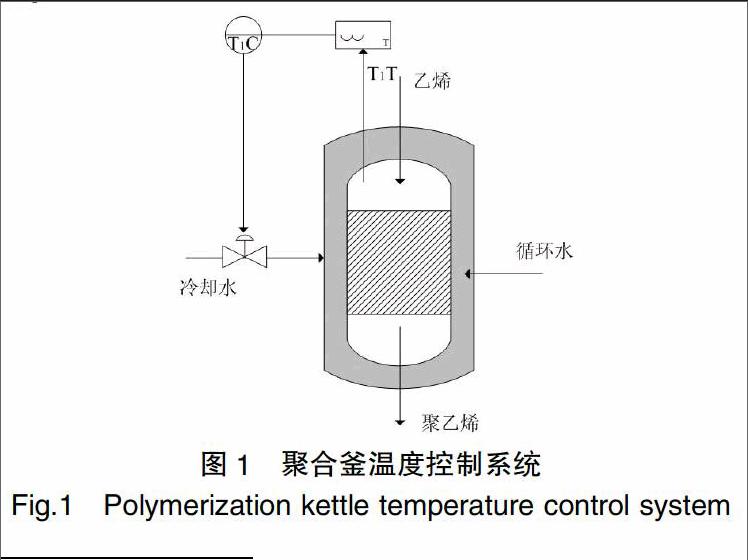温度大时滞串级—Smith预估控制系统建模与仿真
2016-04-05张程张卓
张程 张卓



【摘 要】本文针对大时滞系统在控制过程中存在的容量滞后较大、调节作用不及时、干扰比较频繁和动态偏差量大等常见问题,建立了温度大时滞串级-Smith预估控制系统的数学模型,该模型有效地改善了系统性能,解决了温度控制品质难以提高的问题。以典型温度大时滞控制系统——聚合釜温度控制系统为例,通过引入串级-Smith预估控制以改善系统性能,提高温度控制品质。根据聚合釜温度控制系统的一般特性,进行了聚合釜温度控制系统的系统模型建立和控制器参数整定,并通过MATLAB/Simiulink进行了仿真分析。实验结果表明,相对于单回路PID控制和串级PID控制系统,采用串级-Smith预估控制系统可以明显改善聚合釜温度控制系统的品质,大幅度降低了大时滞系统中由于容量滞后对系统动态性能的影响,使系统具有更优的动态特性和鲁棒性。
【关键词】大时滞;Smith预估;PID;仿真分析
【Abstract】Aiming at common problems of Large time-delay system in control process, such as large capacity lag regulation is not timely, frequent interference and large amount of dynamic deviation, this paper establishes the temperature delay cascade-Smith predictive control system mathematical model. The model can effectively improves the system performance, and solves the problem of difficult to improve the temperature control quality. In this paper, the typical temperature control system with delay-polymerization kettle temperature control system as an example. By introducing the cascade-Smith control to improve system performance and improve the quality of temperature control. According to the general characteristics of polymerization kettle temperature control system, the system model of the temperature control system of polymerization reactor is established and the tuning of the controller, and simulation analysis by MATLAB/Simiulink. Experimental results show that compared with single loop PID control and cascade PID control system, using cascade Smith predictive control system can significantly improve the polymerization kettle temperature control system of quality, greatly reduces the large time delay system due to the capacity of lag effects on the dynamic performance of the system, the system has better dynamic performance and robustness.
【Key words】Large time delay; Smith predictor; PID; Simulation analysis
0 引言
在工业生产过程中,具有时滞特性的控制对象是非常普遍的。在各种时滞系统中,特别是温度控制系统对象的纯滞后时间τ对控制系统的控制性能极为不利,由此,大时滞系统的相关控制问题一直都是工业生产过程中存在的一大难题[1]。本文以典型大时滞系统——聚合釜温度控制系统为例分析,其存在容量滞后较大、调节作用不及时、干扰比较频繁和动态偏差量大等常见问题,采用单回路控制通常无法达到理想的控制效果。为提高大时滞系统的控制品质,通过引入串级-Smith预估控制可以有效地改善系统性能,采用PID控制配合Smith预估器的方案,及时地限制被调量的动态偏差,从而使系统达到良好的性能,大幅度降低容量滞后对系统动态性能的影响,为研究包括聚合釜温度控制系统在内的大时滞系统提供了一种行之有效的解决方案。
1 聚合釜温度控制系统分析
大时滞现象存在于许多工业生产过程中,诸如建材行业中的水泥窑煅烧过程、玻璃熔窑的传热等,克服大时滞是改善此类过程控制质量的一个关键问题。聚合釜温度控制系统是一种典型的温度大时滞控制系统。
一般的单回路聚合釜温度控制系统如图1所示,其生产过程以乙烯为原料,在聚合釜内通过聚合反应,生成聚乙烯(强放热反应),该系统的控制目标为保持聚合釜内温度恒定不变[2]。
温度控制系统的基本扰动来自两个方面,一是原料的扰动,二是冷却水的扰动。由于该系统容量滞后较大,所以如果采用上述的以聚合釜内温度T1为被控量的单回路控制系统(参见图1),当冷却水扰动产生时,系统无法及时做出调整,直至扰动经过较大的容量滞后使得聚合釜内温度发生改变时,系统的控制作用才开始反应,调节作用不及时而导致控制系统无法满足工艺要求。
